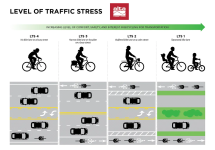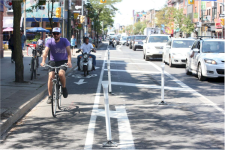There are two types of cyclists, whether they are motor or pedal.
Type "A" uses their cycle for transportation. Type "B" uses it for recreation.
Our roads were built for transportation, not recreation. Hogging lanes for recreational purposes while impeding vehicles trying to deliver goods or workers is counter productive.
There is validity for transportation bicycle lanes but IMO better car drivers would produce better results.
The road to better drivers is long.
If it's OK to take over a road for recreational riding what's wrong with taking over a road for a dance or shinny hockey?
How about a polka party at Yonge and Bloor or the High Park Stanley Shinny Cup.
Type "A" uses their cycle for transportation. Type "B" uses it for recreation.
Our roads were built for transportation, not recreation. Hogging lanes for recreational purposes while impeding vehicles trying to deliver goods or workers is counter productive.
There is validity for transportation bicycle lanes but IMO better car drivers would produce better results.
The road to better drivers is long.
If it's OK to take over a road for recreational riding what's wrong with taking over a road for a dance or shinny hockey?
How about a polka party at Yonge and Bloor or the High Park Stanley Shinny Cup.


















